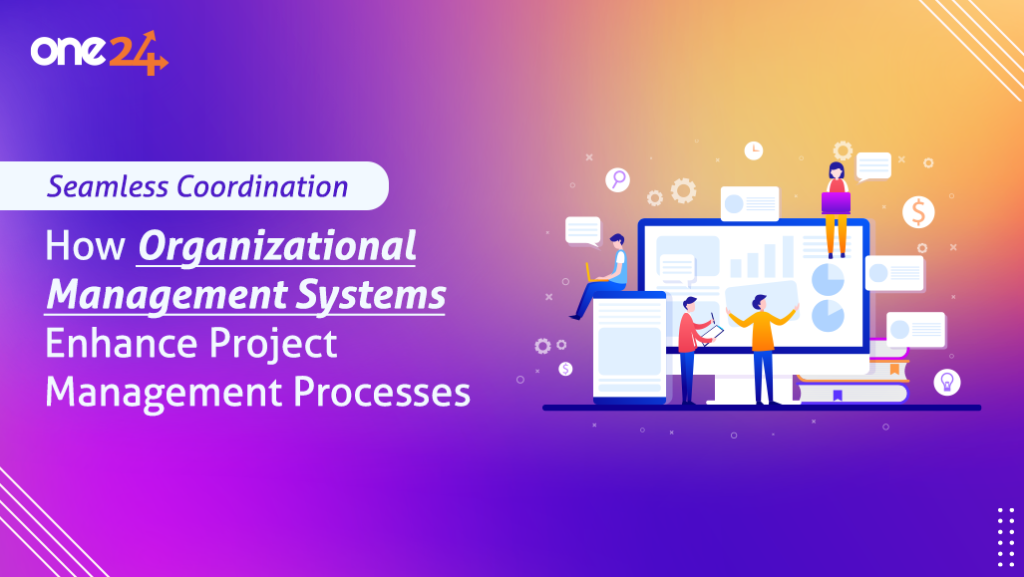Successful project management requires smooth coordination. Given the complexity of today’s projects, efficient teamwork and communication are essential to completing work on schedule and under budget. This blog post will discuss the critical role that organizational management systems (OMS) play in improving the project management process, promoting effective teamwork, allocating resources optimally, and ultimately ensuring project success.
Understanding Organizational Management Systems
Let’s identify organizational management systems (OMS) first before exploring how they affect the project. It comprises a collection of instruments, procedures, and approaches intended to simplify and enhance several facets of business operations. OMS offers a consolidated platform for managing projects, teams, and processes, including task assignment, scheduling, resource allocation, and performance tracking.
The Importance of Seamless Coordination in Project Management
The foundation of a good project management strategy is effective coordination. It entails coordinating team members, assets, and tasks to guarantee that everyone is pursuing shared objectives. Projects are prone to delays, miscommunications, and inefficiencies in the absence of smooth coordination, which can result in missed deadlines and budget overruns. With a proper system in place, smooth coordination is possible by offering tools for collaboration, accountability, and visibility that help keep projects on schedule.

Key Features of Organizational Management System
Numerous characteristics provided by OMS improve cooperation and coordination in project management:
- Task Management
Project managers can assign tasks, establish due dates, and monitor status in real-time with OMS. To make sure that everyone is on the same page and aware of their obligations, team members can interact with one another, access task lists, and update statuses.
- Resource Allocation
By using OMS, project managers may effectively distribute resources—like staff, money, and equipment—in accordance with the needs and goals of their projects. This maximizes production and reduces waste by averting resource overloads and shortages.
- Contact Tools
Real-time contact between coworkers, stakeholders, and clients is facilitated by OMS’s communication tools, which include chat, email, and video conferencing. Effective communication facilitates teamwork, expedites problem-solving, and reduces misinterpretations.
- Document Management
OMS centralizes project documents, facilitating coworkers’ easy access and searching of it. Having a centralized repository guarantees that everyone has access to the most recent data and updates on anything from project plans and reports to contracts and bills.
- Performance Monitoring
Project managers can monitor important performance indicators (KPIs) such as team productivity, project advancement, and budget utilization with the help of OMS. Managers can optimize project outcomes by proactively addressing difficulties, identifying bottlenecks, and making data-driven decisions through the monitoring of performance metrics.
Organizational Management Systems’ Advantages for Project Management
Let’s now explore the ways that OMS improves the project management process:
- Better Cooperation
OMS promotes cooperation by offering a central platform where staff members can exchange concepts, work together on projects, and give immediate feedback. It fosters teamwork and energy by removing organizational issues and encouraging cross-functional collaboration, which improves project outcomes.
- Enhanced Visibility
Get real-time information about the state, direction, and use of resources for projects. To keep projects on schedule, project managers can keep track of activities, deadlines, and dependencies. They can also spot any hazards and delays and take preventative action. Improved visibility also promotes accountability and transparency since it gives stakeholders access to current project performance data.
- Streamlined Workflows
By automating tedious operations, standardizing procedures, and upholding the best standards, OMS simplifies workflows. It speeds up project delivery by getting rid of manual inefficiencies and cutting down on administrative overhead, freeing up time and resources for more value-added tasks.
- Accurate Decision-Making
OMS gives project managers data analytics and actionable insights to help them make well-informed decisions. Managers can spot patterns, foresee difficulties, and make calculated changes to maximize project results by examining performance indicators, resource usage, and project hazards.
- Improved Efficiency
Get increased efficiency by reducing errors, eliminating redundancies, and centralizing project management data and processes. Throughout the project, coworkers have access to the data and tools they require to carry out their responsibilities efficiently, reducing delays and increasing output.
Real-Life Implementation of an Organizational Management System
Let’s look at a real-world example to demonstrate the observable advantages of OMS in project management:
A top software development company, The One Technologies put One24, a PowerPact OMS, in place to improve the efficiency of its project management procedures. The organization accomplished the following results by utilizing the task management, communication, and performance monitoring elements of the platform:
- 20% shorter project turnaround time thanks to better development team coordination and cooperation.
- 15% increase in resource utilization through better software engineer scheduling and allocation depending on project priorities.
- By offering real-time visibility into project progress and prompt communication on milestones and deliverables, client satisfaction was increased by 25%.
Wrapping Up
Effective project management requires smooth collaboration in the commercial world. OMS facilitates the coordination of efforts by offering instruments, process, and analyses that improve project handling, foster teamwork, and yield superior results. Organizations can position themselves for long-term success in their respective industries by using OMS to streamline project handling process, boost efficiency, and ultimately execute projects on time and within budget.






